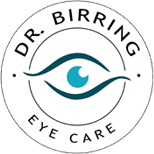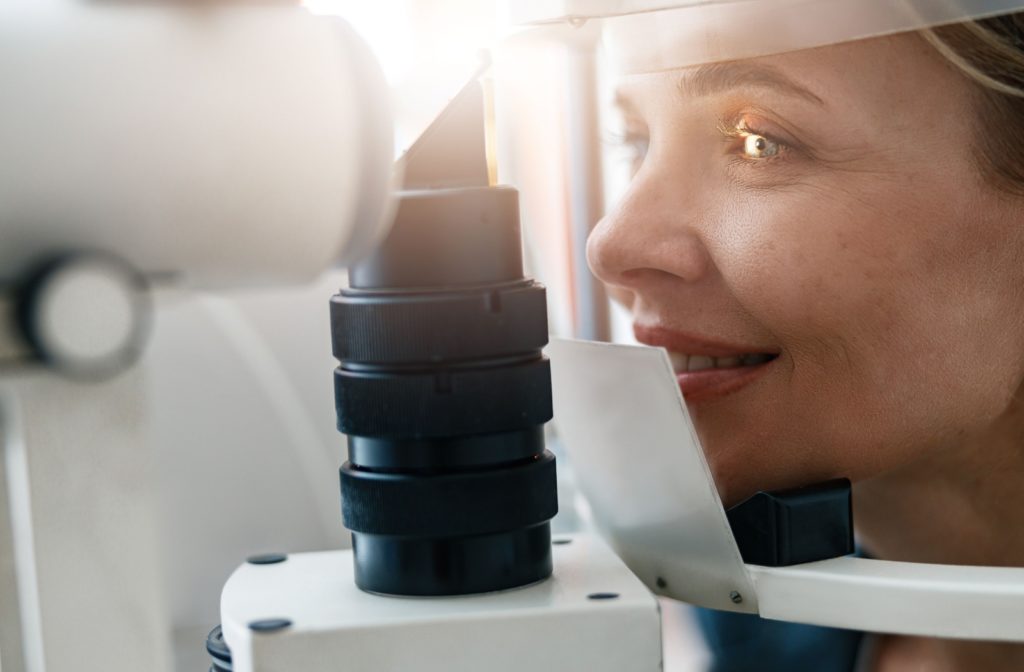When it comes to maintaining optimal eye health, regular eye exams are crucial. A comprehensive eye exam goes beyond simply checking vision, it encompasses a thorough evaluation of various aspects of ocular health.
An eye exam is way more than just a routine check-up for updating your prescription. A comprehensive eye exam is your all-in-one destination for optimal eye health.
It’s about giving your eyes the thorough care and attention they require to stay healthy. Regular eye exams can catch potential issues, such as eye disease, at the earliest stage and help ensure your vision is clear.
At Birring Eyecare, we understand the importance of making sure our patients know what to expect during a comprehensive eye exam so they can make informed decisions about their ocular health.
Patient History
The first step in a comprehensive eye exam is gathering detailed information about your medical history, including any existing eye conditions, family history of eye diseases, medications, and overall health status. This helps your eye care professional tailor the exam and identify any potential risk factors.
Please make sure that you bring any prescription glasses or contact lenses that you currently need or use to your appointment. This allows us to verify that they continue to serve your vision needs effectively.
Additionally, we may discuss aspects of your lifestyle, including your leisure activities and work environment. This conversation also aids us in identifying any specific requirements or risk factors for your eye health.
Visual Acuity Testing
During the visual acuity testing portion of your eye exam, you’ll demonstrate your vision clarity by reading off an eye chart. This will involve assessing your ability to recognize letters from a distance.
This quick test determines the strength of your vision or if you might benefit from glasses or contacts. It’s straightforward and makes sure that your eyes are working just as they should!
Refraction Assessment
During a refraction assessment, our goal is to identify the ideal prescription for your glasses or contact lenses. You’ll be asked to look through a specialized device to evaluate various lens options.
This process involves selecting between different lenses to determine which one enhances your vision most effectively. Adjustments will be made until optimal clarity is achieved. This step ensures that your eyes receive the precise support they need for clear and accurate vision.
Refractive Errors
- Myopia: Myopia allows for clear vision of objects that are close to the individual, while objects at a distance appear blurred. This condition results from the eye’s shape causing light rays to focus incorrectly, leading to difficulty in seeing faraway objects.
- Hyperopia: Hyperopia, or farsightedness, is a condition where distant objects can be seen clearly, but close objects appear blurry. This occurs when the eye’s shape causes light rays to focus behind, rather than on, the retina, making near vision challenging.
- Astigmatism: Astigmatism is a condition in which your eye shape is more like a football than a round basketball. This means light doesn’t hit the back of your eye (the retina) quite right, making things look blurry or wobbly, whether they’re close up or far away.
- Presbyopia: Presbyopia occurs when the eyes begin to show their age, much like how we might need reading glasses to look at a menu or our phone. It happens because the lens in our eye becomes stiffer over time, making it challenging to focus on objects up close.
Ocular Motility & Alignment
Ocular motility and alignment refer to the coordinated movement and proper positioning of the eyes. Essentially, when both eyes are in harmony, they can effortlessly track moving objects, shift focus seamlessly from one point to another, and maintain a stable gaze.
This synchronized action allows our eyes to work together efficiently, providing us with a clear, unified view of our surroundings. However, if there’s a discrepancy in this coordination, it may result in visual disturbances such as strabismus (eye misalignment) or amblyopia (lazy eye).
Visual Field Testing
Visual field testing is a procedure to evaluate the extent of your peripheral vision. During this test, you’ll be asked to focus on a central point and identify when objects enter your peripheral vision.
This method effectively maps out the visual field, identifying any blind spots or areas of reduced vision, which may indicate underlying ocular conditions, such as glaucoma, retinal detachment, and neurological disorders.
Visual field testing is an essential tool not only for assessing what is directly ahead but also for detecting changes and irregularities in one’s side vision.
Intraocular Pressure Measurement
Intraocular pressure measurement, often done with a tonometer, assesses the pressure within your eyes. This test is crucial for early detection of glaucoma, a condition characterized by elevated eye pressure that can lead to irreversible damage if left untreated.

Slit Lamp Examination
A slit lamp exam allows eye doctors to examine all the front parts of your eye in 3D—the cornea, lens, and the iris. Eye doctors can even take a look at the vitreous gel in the middle of your eye. This examination is crucial for detecting various eye diseases, such as cataracts, corneal abnormalities, and signs of infection or inflammation.
A special lens can be used to assist the eye doctor in taking a closer look at the optic nerve, retina, and where the eye’s fluid drains out. Sometimes, they’ll take photos with a camera attached to the slit lamp. Fluorescein dye can also be used to find objects stuck in the eye.
Dilated Examination
A dilated eye exam involves an eye specialist administering Mydriacyl drops to enlarge your pupils. This action allows more light into the eye, akin to widening a window, enabling a comprehensive view of the eye’s internal structures.
During the exam, the healthcare professional assesses the retina and optic nerve for overall health and detects signs of conditions such as glaucoma or macular degeneration. While the dilation may result in temporary blurred vision and light sensitivity, it is a critical component of maintaining ocular health.
Additional Testing
Depending on the patient’s specific needs and risk factors, additional testing may be performed during a comprehensive eye exam. This can include imaging tests such as optical coherence tomography (OCT) for detailed retinal imaging or specialized tests for conditions like color vision deficiency or dry eye syndrome.
Prioritizing Eye Health Through Comprehensive Exams
A comprehensive eye exam is a vital component of preventive healthcare, providing valuable insights into overall eye health and early detection of potential issues.
By undergoing regular eye exams and understanding the essential components involved, individuals can take proactive steps to protect their vision and maintain optimal eye health for years to come.
Remember, early detection and intervention are key to preserving vision and preventing vision loss. Birring Eyecare is here to help you and your family with your eye care needs—book your next eye exam with us!



